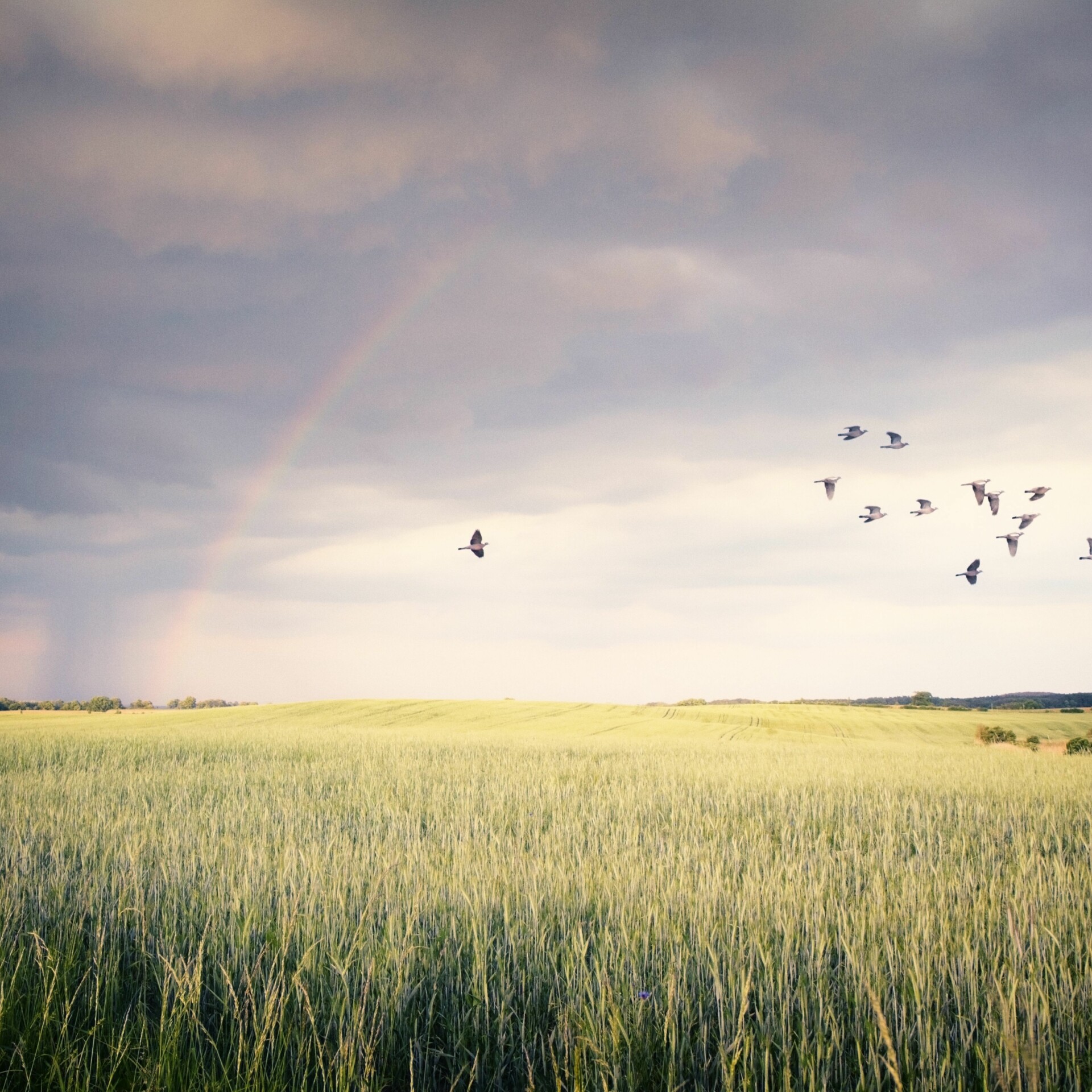Read next
Fighting climate change with artificial intelligence
When it comes to environmental protection and climate action, most people think of renewable energies, electric cars and sustainable consumer goods. Very few would associate it with artificial intelligence (AI), but in fact AI has a crucial part to play in the fight against pollution and climate change.



© iStock.com/Rike
The 17 sustainable development goals of the United Nations that were adopted by all the Member States in 2015 are intended to help promote health and education worldwide, reduce inequality and strengthen economic growth, while at the same time combating climate change and protecting our oceans and forests. A study published in January 2020 in the scientific journal “Nature” has now found that artificial intelligence (AI) can help to achieve 134 subgoals. AI has a particularly positive effect in the environment category.
AI enables efficient use of renewable energies
Today, information and communication technologies account for about one percent of global power consumption. Some estimates, however, expect this to increase to 20 percent by 2030. If this energy is not obtained from renewable energy sources, it will have a negative effect on the CO2 budget. At the same time, however, AI offers huge potential for reducing the amount of CO2 involved in energy generation and use. According to a study by Microsoft and PwC, AI has the potential to reduce global greenhouse gas emissions by one and a half to four percent by 2030.
The energy sector can profit from AI at every level. For example, it can be used in the planning of a new solar power system to calculate the most efficient arrangement of the solar panels. Once the energy has been generated, the solar plant operator is informed of when it is most economical to store or sell the energy. This is done by predicting influencing factors such as the weather, energy requirements and pricing. This information can also be used to avoid overload associated with the increased use of fluctuating renewable energies. In this way, AI ensures that electricity from renewable energies is managed in a needs-based and flexible way and reaches the consumer safely and cost-effectively.
Would you like to learn more about Fraunhofer IKS's research on artificial intelligence? You can find more information here:
Protecting the forest with aerial photographs
The study also assumes that AI will protect 32 million hectares of forest by 2030 by predicting illegal deforestation.
A student at ETH Zurich has developed an algorithm that can predict deforestation in the rainforest. The algorithm calculates the probability of the next case of deforestation by comparing aerial photographs taken one after the other. Because it learns how the streetscape and areas of forest change over time, it can predict the probability of a particular area being deforested in the future without the need for a human to manually label the relevant segments of the photographs.
In Germany, too, aerial photographs are being used to protect forests. A spin-off of the German Research Center for Artificial Intelligence (DFKI) evaluates satellite images by ESA and NASA using neural networks. Particular focus is placed on the infrared information in the images. These can be used to determine the chlorophyll content in the trees, which in turn allows conclusions to be made about health.
Algorithms make biodiversity visible
According to the Global Risk Report by the World Economic Forum (WEF), the loss of biodiversity is one of the greatest risks of the next ten years. The biodiversity strategy in the EU is addressing this problem by planning to place at least 30 percent of its land and sea area under protection by 2030.
An app produced in the US could help to measure the success of this biodiversity strategy. The app benefits from public attention around the world. This is because it combines knowledge obtained from hobby naturalists, who are known as citizen scientists, and biodiversity scientists using AI. Users can use their smartphones to take photos of flora and fauna and share them with others. The community can then collectively determine which animal or plant species are in the picture. This then generates labeled training data for a computer vision algorithm, which after a while can then independently distinguish the species from each other. In combination with the location data, it is then possible to determine whether a species is native to the area. The app helps researchers to understand how invasive species spread, and ultimately protects native biodiversity.
Meanwhile, a German start-up is aiming to make biodiversity in forests measurable. The product developed by the new enterprise is an ecosystem monitoring platform that provides insights into environmental factors in forests in real time. Sensors placed at various locations in the forest measure humidity, temperature, noises, pressure and other factors. These data are evaluated by AI applications and then shown in graphic form for the user. This information can be used as a basis for forest owners, for example, to see whether actions they have taken are having a positive effect on biodiversity in the forest. The platform also indicates when a threat to the health of the forest is identified.
High precision helps make farming sustainable
Precision farming allows farmers to identify optimum measures for their crops. This reduces the use of water, fertilizers and crop protection products, thereby also reducing damage to the surrounding ecosystems. The same applies to livestock, which are fitted with sensors to analyze their behavior. This allows the farmer to see whether an animal is sick or pregnant, for example.
Normally, crop protection products are spread copiously over the field to combat weeds across the entirety of the farmland, even where there are no weeds growing. Not only does this affect the farmer’s bank balance, it is also detrimental to the environment. With precision farming, that is all about to change. For example, a company in the US says that, using its technology, farmers can cut 90 percent of their costs for crop protection products. By using computer vision, individual plants on the field can be identified as either weeds or crops. This allows weedkillers to be used on an individual basis.
Things get even more exciting when looking at the future of farming. A Bavarian manufacturer of agricultural machinery aims to replace large, heavy-duty agricultural machines with small, cloud-controlled field robots. These are designed, for example, to sow corn completely autonomously and with the utmost precision. This not only vastly increases the efficiency of a farm’s business, but also benefits the environment. The low weight of these robots is better for the soil, and electric drives produce less noise and do not leak oil. The sensors also enable precision work, which can reduce the use of fertilizers, crop protection products and seeds.
The examples included in this short article are just some of the countless possibilities that AI holds for environmental protection, and each of them shows how a diverse mix of technologies can work together. It would be wrong to say that AI alone can save our environment. It is just one of many key elements. However, with the increased use of AI come functionality and security risks. With regard to the examples mentioned, these could include a breakdown in energy supply as a result of a misjudgment by an AI. It is equally conceivable, however, that a healthy forest could be felled because an AI says it is diseased. Theoretically, crop failure due to overfertilization is also conceivable.
Research by Fraunhofer IKS in the field of safe intelligence is ensuring that intelligent systems can be used flexibly in a variety of use cases. At the same time, however, it is making sure that uncertainties such as factors that are unfamiliar to the AI are taken into account, so that the safety and performance of the solutions are not at risk.


